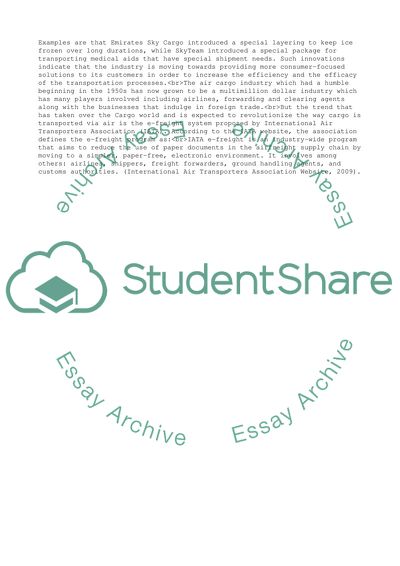Cite this document
(Management of Air Cargo Essay Example | Topics and Well Written Essays - 3750 words, n.d.)
Management of Air Cargo Essay Example | Topics and Well Written Essays - 3750 words. Retrieved from https://studentshare.org/management/1720443-management-of-air-cargo
Management of Air Cargo Essay Example | Topics and Well Written Essays - 3750 words. Retrieved from https://studentshare.org/management/1720443-management-of-air-cargo
(Management of Air Cargo Essay Example | Topics and Well Written Essays - 3750 Words)
Management of Air Cargo Essay Example | Topics and Well Written Essays - 3750 Words. https://studentshare.org/management/1720443-management-of-air-cargo.
Management of Air Cargo Essay Example | Topics and Well Written Essays - 3750 Words. https://studentshare.org/management/1720443-management-of-air-cargo.
“Management of Air Cargo Essay Example | Topics and Well Written Essays - 3750 Words”, n.d. https://studentshare.org/management/1720443-management-of-air-cargo.


